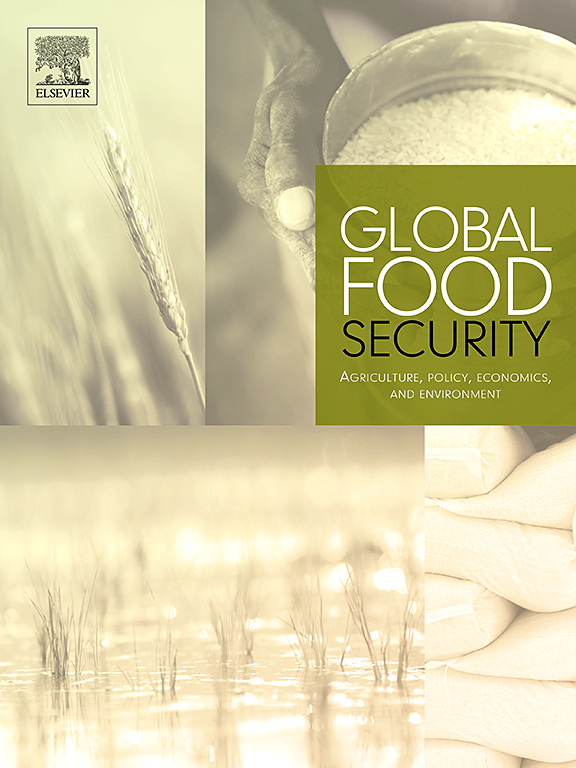预测急性粮食不安全的机器学习模型的潜力和局限性
IF 9.6
1区 经济学
Q1 FOOD SCIENCE & TECHNOLOGY
Global Food Security-Agriculture Policy Economics and Environment
Pub Date : 2025-05-05
DOI:10.1016/j.gfs.2025.100859
引用次数: 0
摘要
急性粮食不安全(AFI)仍然是一个高度相关和持久的挑战。机器学习(ML)通过整合大型和多样化的数据集并考虑AFI的多个驱动因素,为改善预测和预警系统提供了有希望的解决方案。本文审查了现有ML建模工作中的目标变量和输入特征,提供了对当前数据可用性、可访问性和碎片性的评估,并提高了最终用户对ML可能性和局限性的理解。对于建模者,我们推荐最佳输入变量,并通过比较所有方法概述建模工作流程。我们进一步对研究模型预测中驱动因素的影响进行了定量比较。我们提倡加大力度调查机器学习的因果关系,提高机器学习模型的可用性。本文章由计算机程序翻译,如有差异,请以英文原文为准。
Potential and limitations of machine learning modeling for forecasting Acute Food Insecurity
Acute Food Insecurity (AFI) remains a highly relevant and persistent challenge. Machine Learning (ML) presents promising solutions to improve predictions and early warning systems by integrating large and diverse datasets and considering multiple drivers of AFI. This review examines target variables and input features in existing ML modeling efforts, providing an assessment of current data availability, accessibility and fragmentation, and improving the understanding of possibilities and limitations of ML for end-users. For modelers, we recommend optimal input variables and outline the modeling workflow by comparing all approaches. We furthermore develop a quantitative comparison of the influence of drivers in studied models’ predictions. We advocate for an increased effort to investigate ML causality and improve usability of ML models.
求助全文
通过发布文献求助,成功后即可免费获取论文全文。
去求助
来源期刊

Global Food Security-Agriculture Policy Economics and Environment
FOOD SCIENCE & TECHNOLOGY-
CiteScore
20.90
自引率
3.40%
发文量
69
期刊介绍:
Global Food Security plays a vital role in addressing food security challenges from local to global levels. To secure food systems, it emphasizes multifaceted actions considering technological, biophysical, institutional, economic, social, and political factors. The goal is to foster food systems that meet nutritional needs, preserve the environment, support livelihoods, tackle climate change, and diminish inequalities. This journal serves as a platform for researchers, policymakers, and practitioners to access and engage with recent, diverse research and perspectives on achieving sustainable food security globally. It aspires to be an internationally recognized resource presenting cutting-edge insights in an accessible manner to a broad audience.
 求助内容:
求助内容: 应助结果提醒方式:
应助结果提醒方式:


